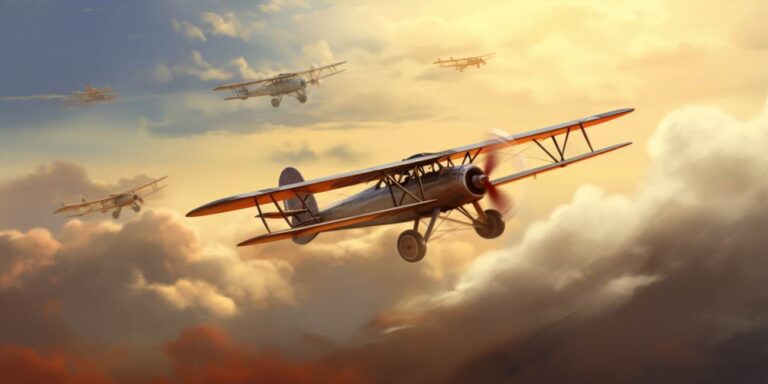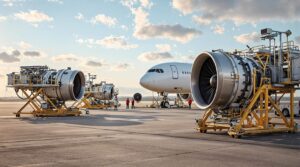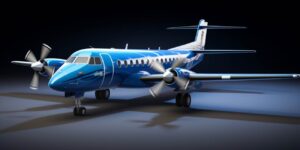The Lockheed SR-71 Blackbird, a legendary reconnaissance aircraft, claims its stake as one of the fastest planes ever built. With a maximum speed that surpasses Mach 3, this sleek black beauty earned its reputation as a high-flying spy, soaring at altitudes that made it nearly untouchable. The SR-71 achieved its remarkable velocity by utilizing powerful twin Pratt & Whitney J58 engines and a design that minimized drag, allowing it to slice through the air with unparalleled swiftness.
On the other hand, the North American X-15, an experimental rocket-powered aircraft, takes a different approach to breakneck speeds. Although not a traditional airplane, the X-15’s breathtaking maximum speed of over Mach 6 makes it an undeniable competitor. Launched from a B-52 bomber, the X-15 would rocket into the upper reaches of the Earth’s atmosphere, experiencing speeds that pushed the limits of human endurance and aircraft engineering.
While both aircraft are undeniably fast, their methods and purposes differ significantly. The SR-71 Blackbird, designed for reconnaissance during the Cold War, utilized sheer speed to outrun potential threats, ensuring the safety of its classified missions. In contrast, the X-15, with its experimental nature, aimed to gather data on hypersonic flight and push the boundaries of aeronautical understanding.
To shed light on the remarkable speeds these aircraft achieved, let’s break down their maximum velocities in terms of Mach numbers. The SR-71, reaching speeds around Mach 3.3, showcased its prowess in the realm of high-altitude reconnaissance. On the other hand, the X-15’s staggering Mach 6 speed demonstrated its ability to explore the edges of atmospheric flight, contributing invaluable data to the field of aerospace engineering.
In the world of aviation enthusiasts and historians, the debate over which aircraft has a higher maximum speed often boils down to personal preferences. Some are captivated by the sleek, futuristic design of the Blackbird, while others marvel at the daring experiments conducted with the X-15. Regardless of personal biases, both aircraft remain iconic symbols of human ingenuity and the relentless pursuit of pushing the boundaries of what’s possible in the vast skies above.
The maximum speed of modern passenger airplanes
The maximum speed of modern passenger airplanes is a fascinating aspect of aviation technology that showcases the incredible engineering achievements in the field. These marvels of the sky are designed to transport passengers across vast distances in the shortest possible time, pushing the boundaries of speed and efficiency.
One of the fastest commercial airplanes in operation today is the Boeing 747-8, known for its remarkable performance. This long-haul aircraft has a maximum speed of approximately Mach 0.855, which translates to around 650 miles per hour (1046 kilometers per hour). Flying at such speeds allows the Boeing 747-8 to cover extensive routes efficiently, making it a preferred choice for many international carriers.
Another noteworthy mention is the Airbus A380, a double-deck, wide-body, four-engine airplane. While slightly slower than the Boeing 747-8, the A380 still boasts an impressive maximum speed of approximately Mach 0.85, ensuring rapid travel for passengers aboard this colossal aircraft.
For narrow-body aircraft commonly used in domestic flights, the Boeing 737 series stands out. The Boeing 737-900ER, for instance, has a cruising speed of approximately Mach 0.78 or around 590 miles per hour (950 kilometers per hour). Although not as fast as their larger counterparts, these airplanes are designed for efficiency on shorter routes.
It’s crucial to note that these maximum speeds are typically achieved at cruising altitudes, where the airplanes can operate more efficiently in thinner air. During takeoff and landing, the speeds are significantly lower for safety reasons, emphasizing the importance of controlled acceleration and deceleration.
Table below provides a quick comparison of the maximum speeds of selected modern passenger airplanes:
| Aircraft Model | Maximum Speed (Mach) | Maximum Speed (MPH) |
|---|---|---|
| Boeing 747-8 | 0.855 | 650 |
| Airbus A380 | 0.85 | 652 |
| Boeing 737-900ER | 0.78 | 590 |
These maximum speeds not only reflect the engineering prowess behind these airplanes but also play a crucial role in shaping the dynamics of modern air travel, ensuring passengers reach their destinations swiftly and comfortably.
Older aircraft models top speeds
When delving into the realm of aviation history, exploring the top speeds of older aircraft models unveils a captivating narrative of technological prowess and Cold War rivalries. The rivalry between Soviet and American fighters during this era was characterized by a relentless pursuit of faster and more advanced aircraft.
The Soviet Union, known for its innovative engineering, produced several remarkable fighter jets that pushed the boundaries of speed. One standout example is the Mikoyan-Gurevich MiG-25, a legendary interceptor. With its top speed of mach 3.2, this Soviet marvel was designed to counter high-altitude threats. Its sheer velocity made it a formidable opponent in the skies.
On the other side of the Iron Curtain, the American aviation industry was also fervently working on achieving unmatched top speeds for its fighter aircraft. The Lockheed SR-71 Blackbird, a reconnaissance aircraft with a design ahead of its time, reached an astounding top speed of mach 3.3. This jet not only excelled in speed but also in evading enemy defenses, making it a symbol of American technological ingenuity.
Comparing these two aviation giants, the race for top speed supremacy was a central theme during the Cold War. While the MiG-25 and SR-71 were both formidable in their own right, their capabilities and design philosophies diverged. The Soviet emphasis on robust interceptors met the American focus on versatile reconnaissance planes, showcasing the distinct approaches taken by these superpowers.
Breaking down the top speeds of these fighters reveals not only numerical differences but also strategic nuances. The MiG-25’s mach 3.2 represented the Soviet commitment to intercepting high-altitude threats promptly. Meanwhile, the SR-71’s slightly higher mach 3.3 underscored the American priority of reconnaissance at unparalleled speeds.
Examining the evolution of top speeds in Soviet and American fighters provides a glimpse into the intense competition that fueled advancements in aeronautical engineering. Each mach number symbolizes not just a numerical value but a chapter in the ongoing saga of technological innovation and geopolitical rivalry.
| Fighter Model | Nationality | Top Speed (mach) |
|---|---|---|
| MiG-25 | Soviet | 3.2 |
| SR-71 Blackbird | American | 3.3 |
Fastest russian and american fighter jets
The realm of aerial combat has witnessed an eternal rivalry between the Mig and F-16, two stalwarts that have become synonymous with the epitome of speed and agility in the skies. The Mig, a product of Russian engineering prowess, and the F-16, a shining star in the American arsenal, have engaged in legendary dogfights that push the boundaries of aviation capabilities.
When it comes to sheer speed, the Mig series stands out as a testament to Russian aeronautical excellence. The Mig-31, known as the “Foxhound,” is a supersonic interceptor that can achieve astounding speeds of up to Mach 2.83, making it one of the fastest aircraft ever built. This speed is not merely a statistic but a manifestation of the engineering marvel embedded in the Mig DNA, enabling it to outpace its adversaries in the blink of an eye.
On the other side of the spectrum, the F-16 Fighting Falcon, an iconic American creation, boasts agility and versatility that have redefined the dynamics of modern dogfights. While its absolute top speed might not match that of the Mig-31, the F-16 compensates with its unmatched maneuverability, a crucial factor in close-quarters combat scenarios. In the unforgiving dance of a dogfight, agility often trumps raw speed, and the F-16 excels in this domain.
Picture a hypothetical dogfight between the Mig-31 and the F-16, a clash of titans in the vast expanse of the sky. The Mig, streaking through the heavens at hypersonic speeds, relies on its overwhelming velocity to close in on its prey rapidly. Meanwhile, the F-16, with its nimble aerodynamics, dances through the air, dodging and weaving to avoid the thunderous onslaught of the Mig.
Engulfed in the intensity of a dogfight, the pilots of these marvels of aviation skillfully employ the strengths of their respective aircraft. The Mig, with its blistering speed, attempts to gain a positional advantage, closing the gap swiftly to unleash its lethal arsenal. In response, the F-16, relying on its agility, executes intricate maneuvers, attempting to outmaneuver and outsmart its adversary in this high-stakes aerial chess match.
As the hypothetical dogfight unfolds, the clash between Mig and F-16 transcends the physical realm and delves into the realm of strategy, skill, and split-second decision-making. The speed of the Mig becomes both a blessing and a curse, a relentless force that demands precision in execution and split-second decision-making from its pilot.
Amidst the chaotic ballet of a dogfight, one thing remains certain—the Mig and F-16 represent the pinnacle of aerial engineering, each embodying the unique philosophies of their respective nations. The clash of these aerial titans, the ballet of speed and agility, continues to captivate aviation enthusiasts and military strategists alike, as the eternal quest for supremacy in the skies unfolds.






